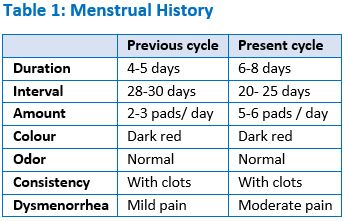A Case Study in Asrigdara with Shodhana and Shamana Chikitsa
DOI:
https://doi.org/10.21760/jaims.8.7.41Keywords:
Asrigdara, Uterine vessels, Rajas, Shamana Chikita, Shodhana ChikitsaAbstract
Asrigdara is a condition that physician to face in day-to-day practice. It is a common medical disease seen in women. Which can cause significant disturbances physically as well as mentally. Asrigdara characterized by excessive excretion of Asrik. Abnormal uterine bleeding includes both cyclic and noncyclic bleeding. Acharya Charaka has explained many causative factors for like Ati Lavana, Amla, Guru, Katu, Vidahi, Krushara, Payasa, Saktu, Mastu etc. aggravates Vata withholds Rakta, vitiated due to above mentioned reasons. Increases its amount reaching the Rajovaha Sira (uterine vessels) which further increases Rajas (menstrual blood). Normalizing the amount of flow and curing the associated symptoms are fundamental principles of treatment to be adopted. A married female patient of 31 years attended the OPD with the complaint of increased duration of menstruation associated with excessive flow with lower abdominal pain; pain was spasmodic in nature along with generalized weakness. With the aim to minimize the cyclic blood loss and regularize the cycle the Shodhana Chikitsa (detoxification) i.e., Virechana Karma and Shamana Chikita (palliative treatment) with Shalmali Ghrita. This therapy, helped to cure the heavy flow during menses and regularize the cycle.
Downloads
References
https://www.ncbi.nlm.nih.gov/pmc/articles/pmc 4970656
Konar H, DC Dutta’s textbook of gynecology (7th ed.), 15th chapter, The health sciences publisher, 2005.pp.152.
Kapoor G, textbook of A comprehensive treatise on streeroga. 4th chapter, Chaukhambha Vishvabharati, Varanasi;2018.pp.69.
Vridha Jivaka, Kashyapa Samhita or Vridhajivakiya Tantra, revised by Vatsya with Sanskrit introduction by Nepal Rajaguru Pandit Hemraja Sharma with Ayurvedalankar Srisatyapala Bhisagacharya, Vidyotini Hindi Commentary and Hindi translation of Sanskrit Introduction, Chaukhambha Sanskrit Sansthan, reprint 2010, Sidhisthan- 2, p-150.
Mangal Gopesh, Sharma Om Prakash, Sharma R. S., Pharmokinetics of Vamana and Virechna karma, Journal of Ayurveda, Jan March-2011, P-67.
A.P. Deshpande, Subhash Ranade ed, Text book of DravaygunaVigyan (English), Part-2, A.R. Nandurkar, Proficient Publishing House 535, Shaniwar Peth, Pune; 2007. p.501.
Rastogi R, Mehrotra BN, Sinha S, Shrivastava M, Bhushan B. Compendium of Indian Medicinal Plants. Vol. 4. New Delhi, India; CDRI Lucknow & National Institute of Science Communication; 2002. p. 513.
Nadkarni KM, Nadkarni AK, editor. Indian Materia Medica. Vol. 1. Popular Prakasan: Bombay;2007. p. 691-4.
Mhaskar KS, Blatter E, Caius JF, Kirtikar KR, Basu’s BD. Illustrated Indian Medicinal Plants. Vol. 8. Delhi; Sri Satguru Publications; 2000. p. 2387-90.
You YJ, Nam NH, Kim Y, Bae KH, Ahn BZ. Anti angiogenic activity of lupeol from Bombax ceiba. Phytother Res 2003; 17: 341-4.
Le Couter, J.et al. Ogenic, Identification of an angiogenic mitogen selective for endocrine gland endothelium. Nature 412; 2001.p. 877-884.
Saneja A, Kaushik P, Kaushik D, Kumar S, Kumar D. Antioxidant, analgesic and anti-inflammatory activities of Santalum album Linn. Planta Medica 2009; 75: 102















